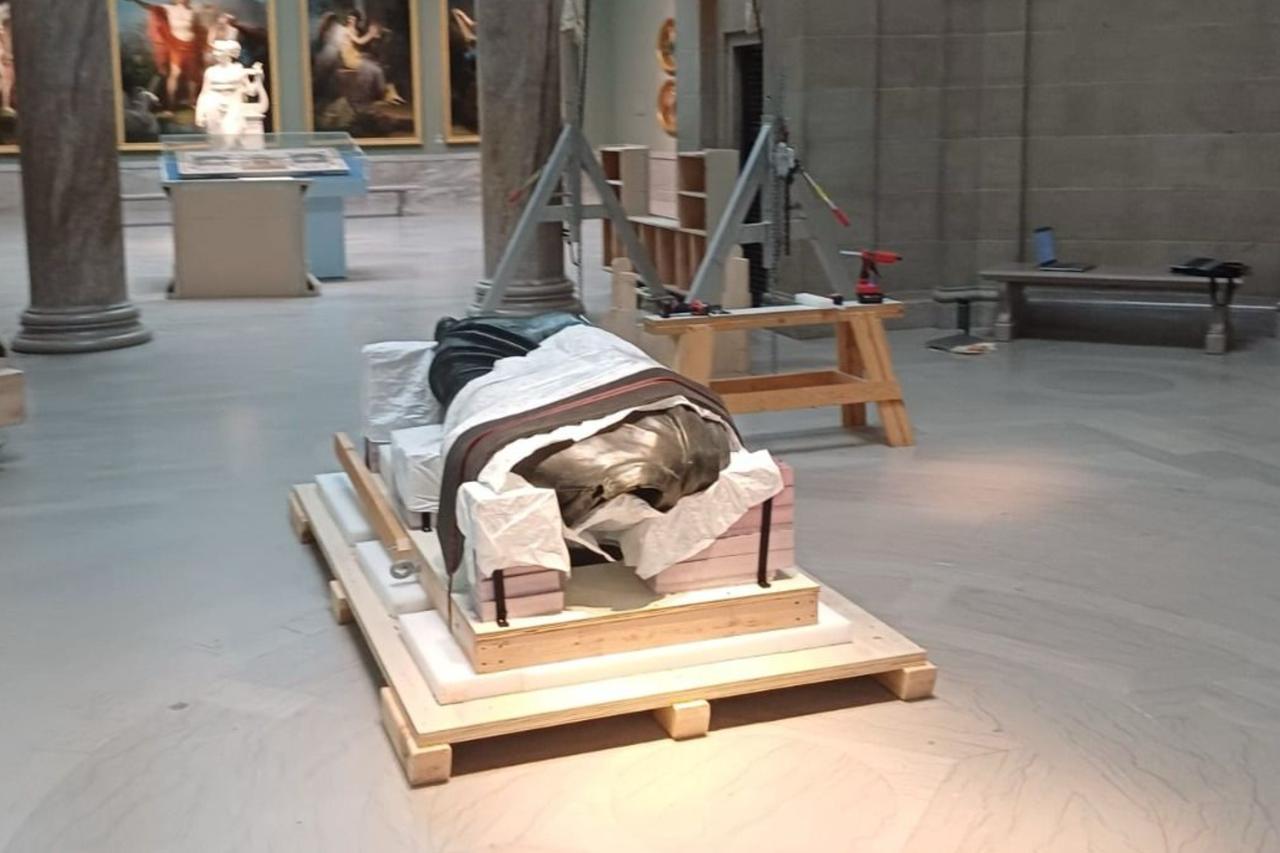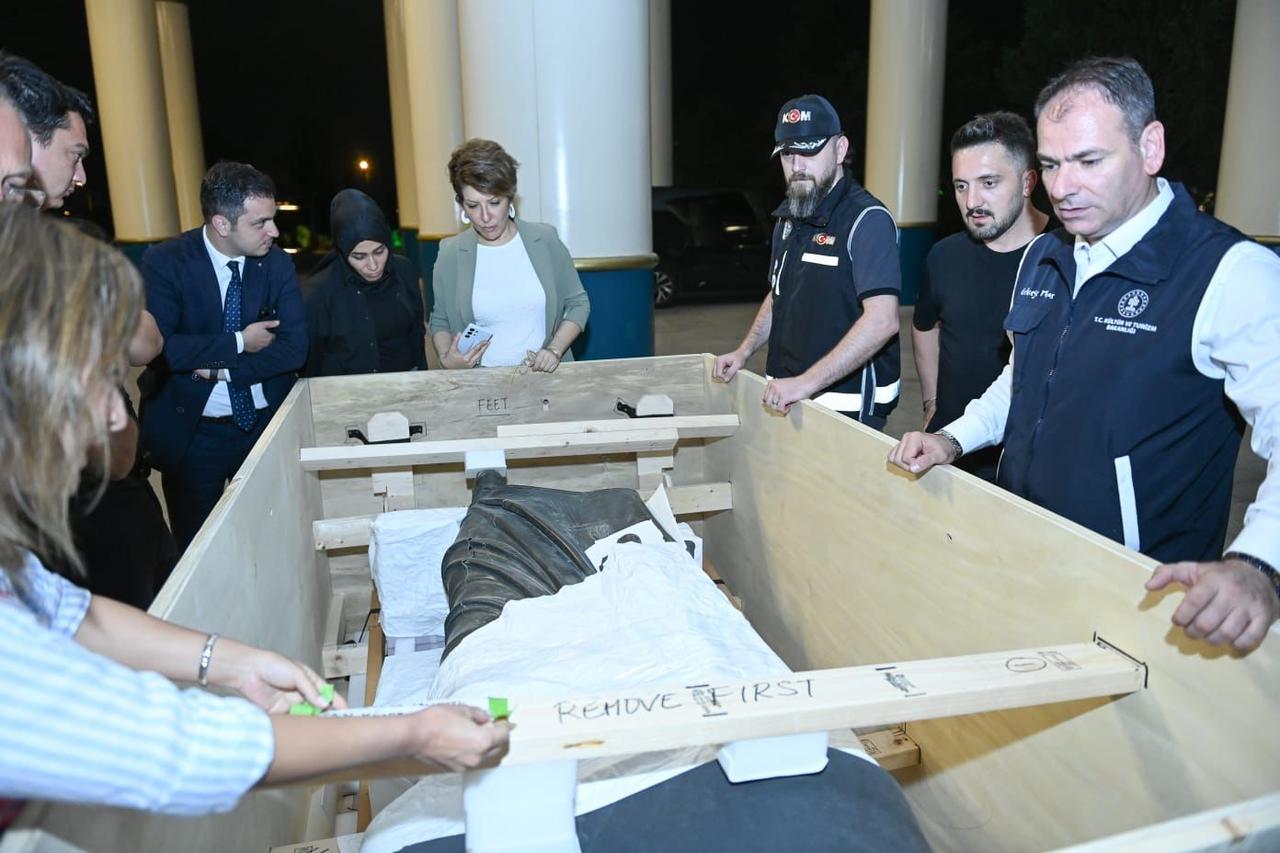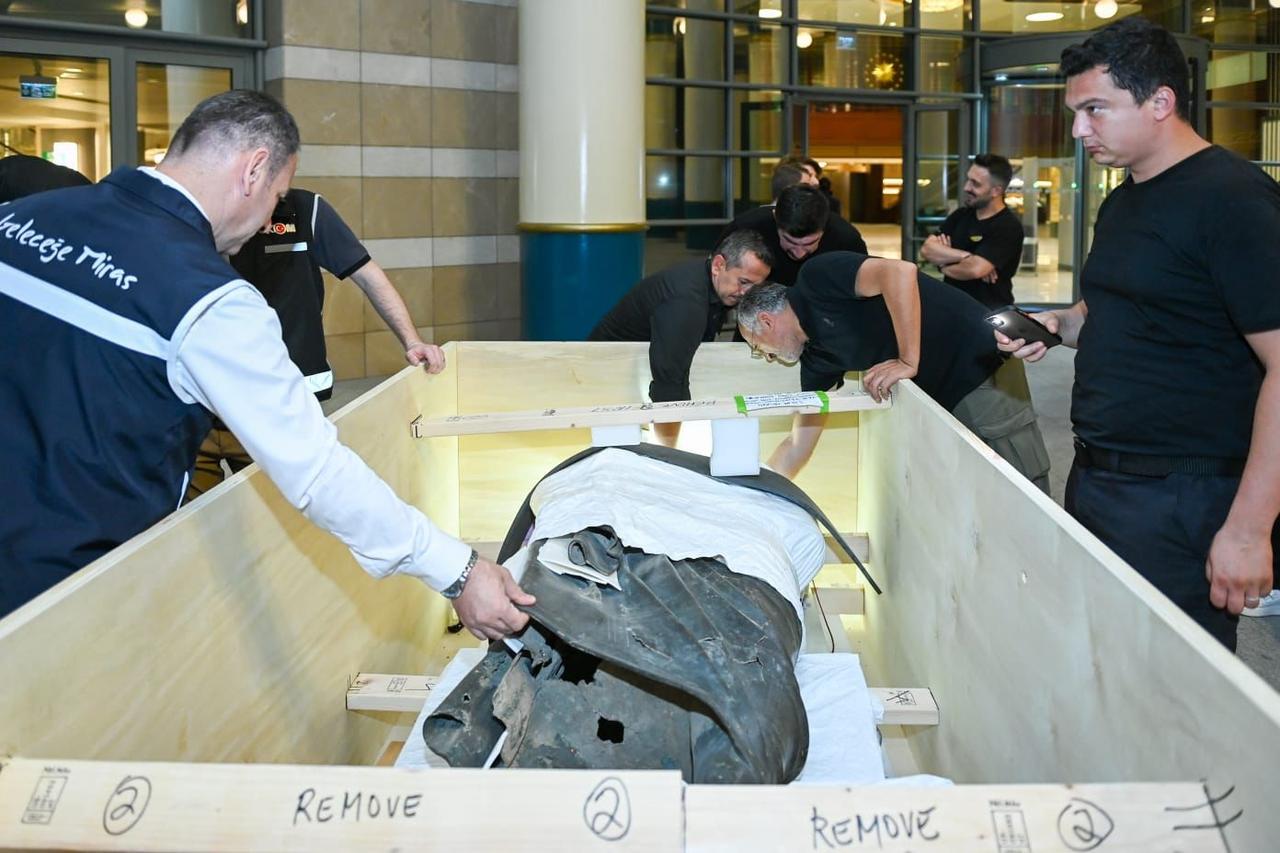
The bronze statue of Roman Emperor Marcus Aurelius, looted from the ancient city of Boubon in southwestern Türkiye during illegal excavations in the 1960s, has been returned to its country of origin.
After more than six decades in the United States, the piece was officially repatriated following a complex investigation led by Türkiye’s Ministry of Culture and Tourism in cooperation with U.S. authorities.
Minister of Culture and Tourism Mehmet Nuri Ersoy announced the statue’s return on social media, calling the outcome a “historic achievement.”
In his statement, he emphasized the persistence and determination involved in reclaiming the statue: “We were right, determined, patient—and we won. We collected the necessary evidence with painstaking effort and brought the ‘Philosopher Emperor’ back to the land he belongs to.”

The Marcus Aurelius statue dates back to the second and third centuries A.D. and is considered one of the finest examples of bronze sculpture from the Roman period in Anatolia.
It was taken from Boubon, located in today’s Burdur province, through unauthorized excavations in the 1960s. The piece eventually made its way into the collection of the Cleveland Museum of Art in Ohio.
The late Professor Jale Inan, a prominent figure in Turkish archaeology, first drew academic attention to the statue’s true origin. Her foundational work paved the way for the case’s development in the international arena.

In 2021, a joint investigation was launched by Türkiye’s Ministry of Culture and Tourism, the Manhattan District Attorney’s Office in New York, and the U.S. Department of Homeland Security Investigations (HSI).
The aim was not only to recover the Marcus Aurelius statue but also other Roman artifacts taken from Boubon, including heads and statues of emperors such as Lucius Verus, Septimius Severus, and Caracalla.
Through extensive archival research, witness testimony from the 1967 looting, and precise comparisons between the statue’s foot measurements and its original base in Boubon’s Sebasteion structure, the team gathered strong evidence. The discovery of similar sandal designs during excavations at nearby Kybra reinforced Türkiye’s claim.
The Cleveland Museum of Art challenged the statue’s connection to Boubon in court after a New York Supreme Court order allowed the statue to be seized in 2023. In response, Türkiye agreed to scientific analyses to substantiate its claim, including geochemical tests conducted at Germany’s Curt Engelhorn Archaeometry Center.
In May 2024, ministry experts took a silicone mold of the statue’s foot and matched it to bases in Boubon.
Soil samples were also collected with extreme care. Due to the hardened condition of the soil inside the statue, the ministry’s team had to extract samples manually.
As Kacakilikla Mucadele Dairesi (Department of Combatting Smuggling) head Zeynep Boz explained, “It was a moment where we had to rely on instinct. We dug with our fingernails to extract the soil.”
Laboratory tests confirmed that the soil inside the Marcus Aurelius statue matched that found in another statue seized in 1967 and now housed in the Burdur Museum. This evidence convinced the Cleveland Museum of Art to withdraw its case and accept the statue’s return.

The return of the Marcus Aurelius statue has been described by the Turkish Ministry as a milestone in the country’s fight against the trafficking of cultural property.
Officials emphasized that this was not merely a repatriation but a landmark demonstration of international cooperation, legal rigor, and scientific precision.
Minister Ersoy added that the statue will soon be displayed in a special exhibition in Ankara. He also extended thanks to the Ministry’s cultural heritage teams, the Boubon excavation unit, the Burdur Museum, and Turkish Airlines for facilitating the statue’s transport from the United States.
Türkiye has reaffirmed its commitment to continue pursuing the return of all cultural assets removed from the country, regardless of where they are found.